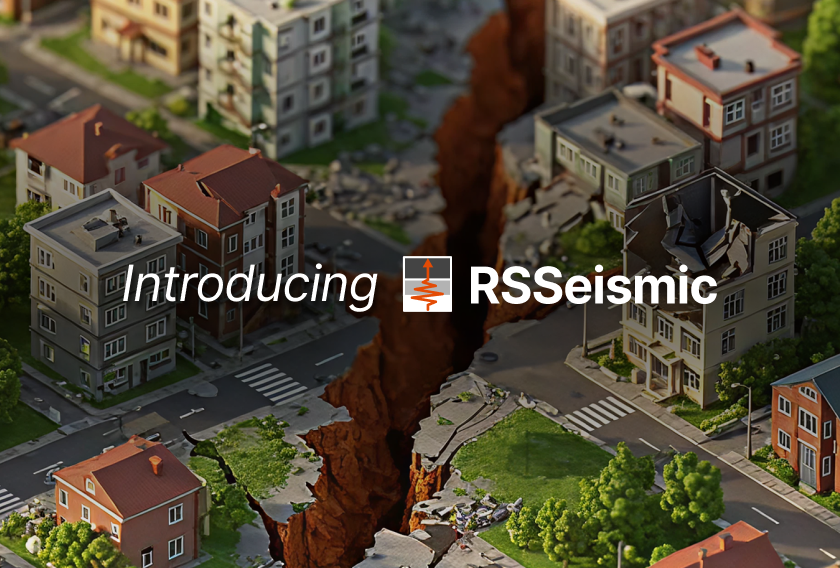Verified and Versatile: RSSeismic Puts 1D Site Response Analysis on Solid Ground
RSSeismic is Rocscience’s dedicated solution for 1D seismic site response analysis, built on the robust computational architecture refined by Dr. Youssef Hashash and collaborators over more than 26 years. Trusted across engineering practice, research, and education, RSSeismic’s modelling framework has undergone meticulous validation against closed-form solutions, laboratory experiments, and field measurements. Today, the platform bridges this scientific legacy with a modern interface, streamlined workflows, and enterprise-grade support; bringing confidence and capability to geotechnical engineers at every stage.
Evaluation Relative to Measurements
The credibility of a seismic site response tool is anchored in its ability to replicate observed reality. RSSeismic’s computational results have been systematically benchmarked against empirical measurements, from controlled laboratory scenarios to seismic data gathered during actual earthquake events.
These validation campaigns reveal the conditions under which equivalent-linear and nonlinear analyses converge, where they diverge, and where classical 1D assumptions begin to yield to multidimensional site effects. For instance:
- Centrifuge testing of sand columns provided a controlled benchmark for evaluating computed versus measured ground motion amplification. An equivalent 26 m profile of dry sand was subjected to a range of ground motions in a flexible container, allowing researchers to directly evaluate the accuracy of equivalent-linear and nonlinear simulations. Nonlinear analysis showed superior agreement with measured response, validating the method’s importance for practical design.
- Field recordings from the 2011 Tohoku-Oki earthquake provided a unique opportunity to calibrate simulated site response against data from a magnitude 9.1 mega-thrust event. Vertical array networks across Japan captured long-duration ground motions; allowing verification of analytical models under extraordinary loading. Despite limited site characterization data, the program successfully reproduced key features of the recorded motions, highlighting its robustness under real-world demands.
- Centrifuge experiments on tall building–underground structure interaction illustrated how 1D site response analysis integrates within advanced seismic workflows. Tall building effects on underground infrastructure, such as subway stations, were investigated via centrifuge tests—using free-field motions to calibrate soil profiles before extending insights to 3D soil–structure interaction problems. This work underscores the foundational reliability and utility of 1D analysis as a gateway to more sophisticated modelling.
These studies not only affirm RSSeismic’s analytical robustness; they also demarcate where simplified approaches remain valid and where more advanced modelling becomes essential. Engineers gain a clear map of applicability, ensuring results are both credible and properly scoped for each project.
Applications to Engineering Practice
RSSeismic enables a spectrum of high-value engineering tasks, including:
- Ground motion estimation at the surface and within the soil; supporting design spectra, as well as detailed calculation of seismic parameters such as accelerations and strains.
- Porewater pressure modelling to evaluate liquefaction potential and post-earthquake settlement, with user-selectable models that can include or exclude dissipation during shaking. These analyses inform risk evaluations and downstream settlement predictions in tools such as Rocscience’s Settle 3.
- Input motion generation for structural and soil-structure interaction analyses. RSSeismic is broadly utilised to generate free field boundary motions or motions that are used at the base of shallower SSI model.
Beyond site-scale projects, the software’s validated methods have now been applied in large-scale national seismic hazard mapping, informing building codes, risk assessments, and infrastructure design worldwide.
With RSSeismic, these same capabilities are now embedded in a modern, streamlined platform that integrates directly with the Rocscience tool RSLog with other planned integrations in the near feature — enabling engineers to move smoothly from site response to slope stability and finite element analysis within the Rocscience ecosystem.
Use in Education
For over two decades, RSSeismic’s underlying engine has supported geotechnical earthquake engineering curricula across leading institutions. Coursework often features modules dedicated to seismic site effects, guiding students through the nuances of linear, equivalent-linear, and nonlinear analysis. RSSeismic’s intuitive interface and workflow design allow straightforward progression from textbook cases to hands-on numerical modelling — facilitating direct comparisons between theory and simulation and fostering deeper understanding of phenomena such as stiffness reduction and porewater pressure generation.
As part of the Rocscience educational suite, RSSeismic gives students access to industry-standard tools and integrated workflows, equipping the next generation of engineers to tackle real-world challenges with confidence and agility.
Into the Future
From classroom instruction to national hazard modelling to resilient infrastructure design, one-dimensional site response analysis remains indispensable. With RSSeismic, Rocscience is advancing these capabilities with greater usability, deeper workflow integration, and expanded modelling features. The result is a platform that honours a proven scientific legacy while rising to the demands of today’s high-impact engineering projects.
Simplify seismic design with EL and NL in one workflow: supported, updated, and integrated with Rocscience.
Start Your Free Trial


